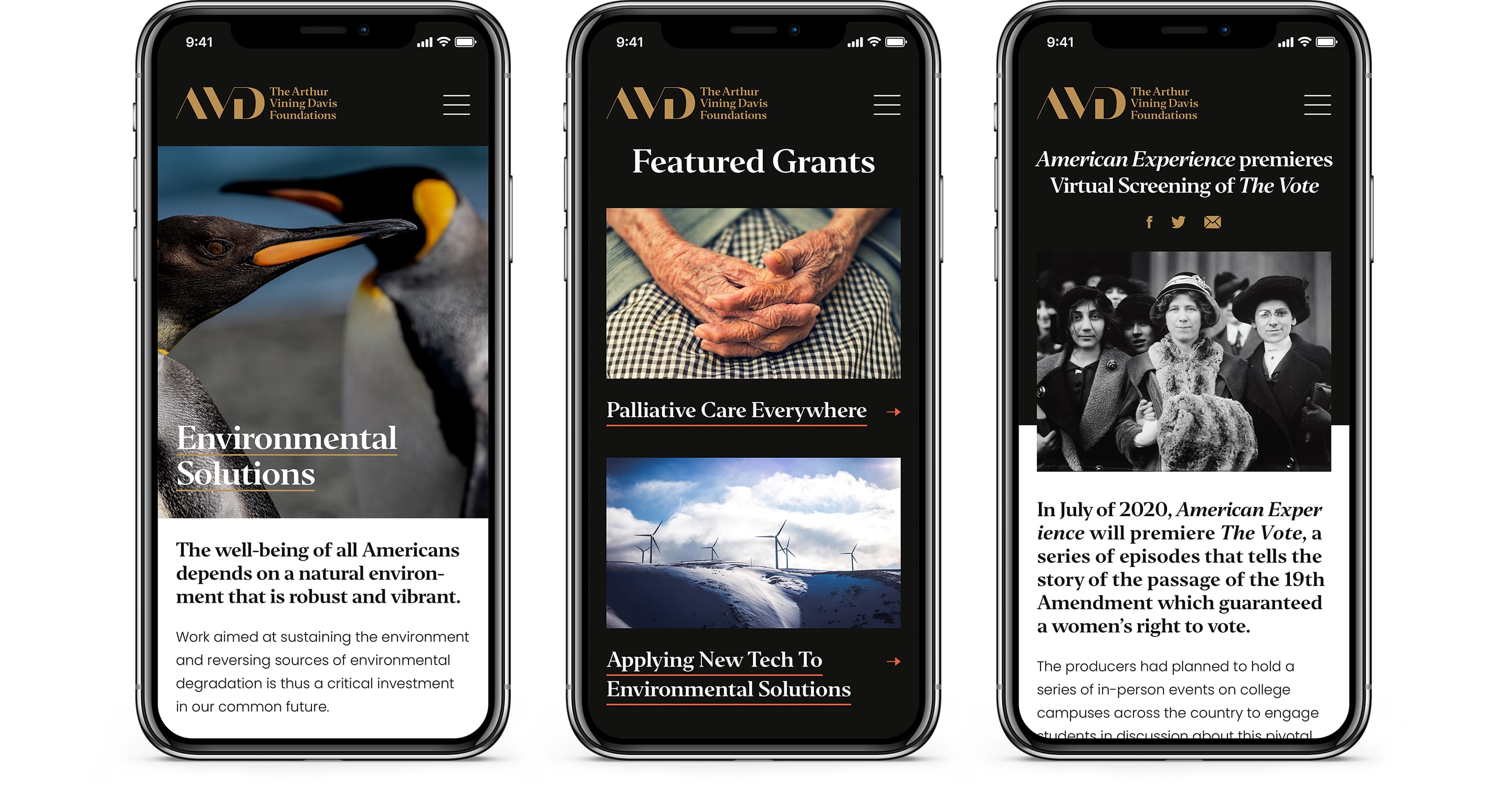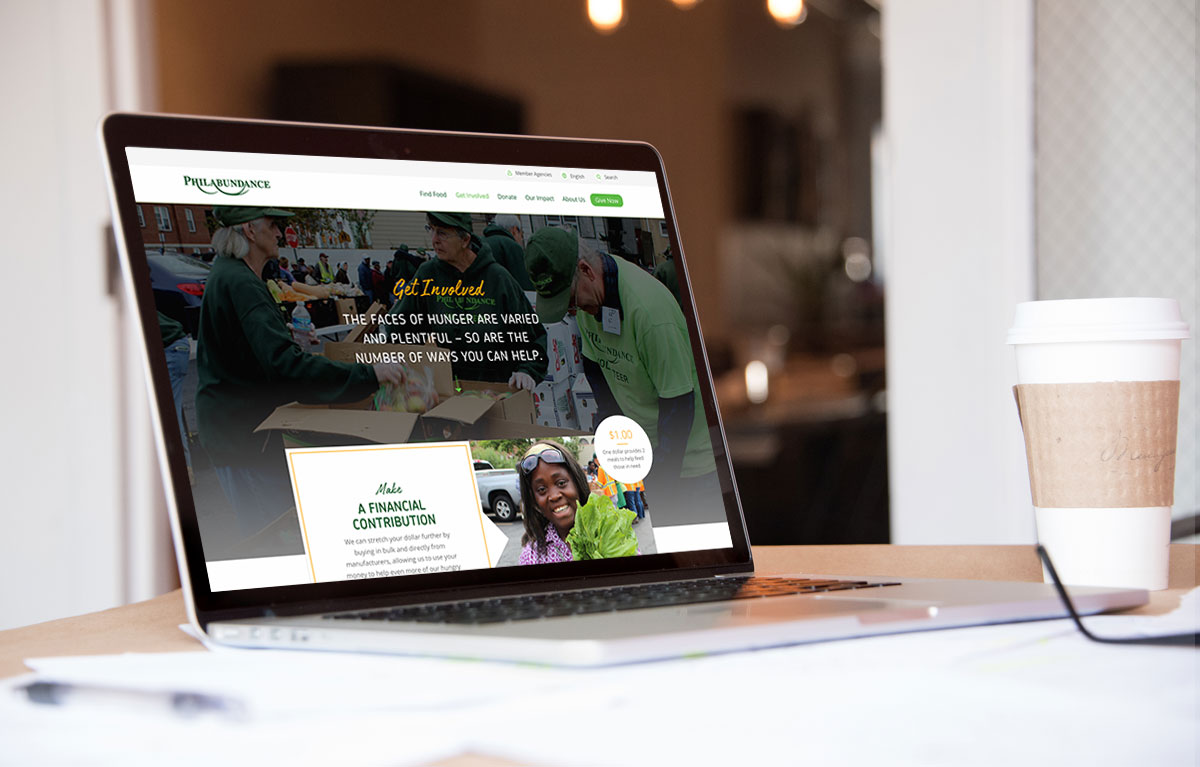March 30, 2022
Four Things the Best Websites for Nonprofits and Foundations Have in Common

Your website is one of your best tools for communicating with people. When done well, it serves as a single source of information for multiple audiences. Creating, or recreating, website content can be overwhelming. It’s hard to know where to start. We took a look at some of the best nonprofit and foundation websites and found four things they all have in common.
They have a clear sense of audience
Chances are your organization’s mission clearly defines the audience for your service. If you’re a nonprofit aiding families experiencing food insecurity, or a foundation funding the development of new energy technology, the audience for your service is right at the center of your mission. But a website needs to serve a much wider audience than the just that primary group.
Unlike other targeted communications that address only one specific audience, a website needs to have pathways for all kinds of audiences. Donors will need a way to navigate the website, the media may need to quickly learn about work you’ve been doing, or the general public may have questions.
It’s important to create clear user paths for each of your audiences so they can find the information they need. Start by clearly defining the audience, then create clear information architecture for them to navigate. This helps them find the information they want, and complete any relevant tasks on your site.
They share the mission more than the story
We’ve all read something that left us wondering “what now.” Something that dwells too much on the past can leave the reader without anything to do next. The best organizations know the difference between their mission and their story.
You may have a great grasp on the history of the organization and the story of why it exists. Or there may be pressure to include those details from other people within the organization. But it rarely benefits the user to know a lot about the history of the organization.
What’s way more important is where you are headed, and how people can go with you. Good nonprofit and foundation websites focus their content on the mission of the organization, the work they are doing today, and actions their audience can take.
This goes further than having a page dedicated to the mission of your organization. Consider how each piece of content on the website connects.

Defining your mission and sharing the work your organization is doing is a great way to connect with new audiences, but it also keeps your existing audience engaged.
They offer a clear view of your community
One of the things that nonprofits and foundations are able to do so well is build community. They bring together groups of people with common interests and goals, both professional and personal. People may not initially engage with a nonprofit or foundation because of the community, but that connection to a network is a true benefit.
One of the best things your website can do is show off your community in a way that goes beyond just using photos. Integrating social media content that your community members create is a great way to do this. You can monitor branded hashtags or look out for positive mentions of your organization using social listening tools.
If you have really dedicated members of your community, reach out and see if they’d be willing to help create content about working with your organization; they could be interview subjects for a video, help write a blog or two, or provide testimonial quotes.
Spending time telling the story of your community helps create more context around your organization’s mission and work. Attaching those real faces to your work can welcome others into your community as well, and deepen the relationship your current audience has with your organization.
They motivate action where appropriate
Every organization is trying to drive some sort of action. For businesses, this is easily definable; they need to sell their product. For nonprofits and foundations, the goal you’re striving for may be a little more unique. Regardless of what you’re trying to encourage people to do, it’s important to make sure your website motivates them to do it.

This can be a tough line to walk. We’ve all been to websites where your experience is ruined by floating pop-ups trying to get you to buy something you don’t want or offer up your email address for a newsletter you won’t read.
The best websites are intentional about where they place action steps for visitors. Thinking strategically about how you direct and inspire action on your website makes all the difference for reaching your goals.
Part of this goes back to knowing your audience well, and giving each portion of your audience the path they need to accomplish their goals. Keeping donation information separate from grant application information, for example, keeps those distinct paths for that distinct audience focused on a goal.


